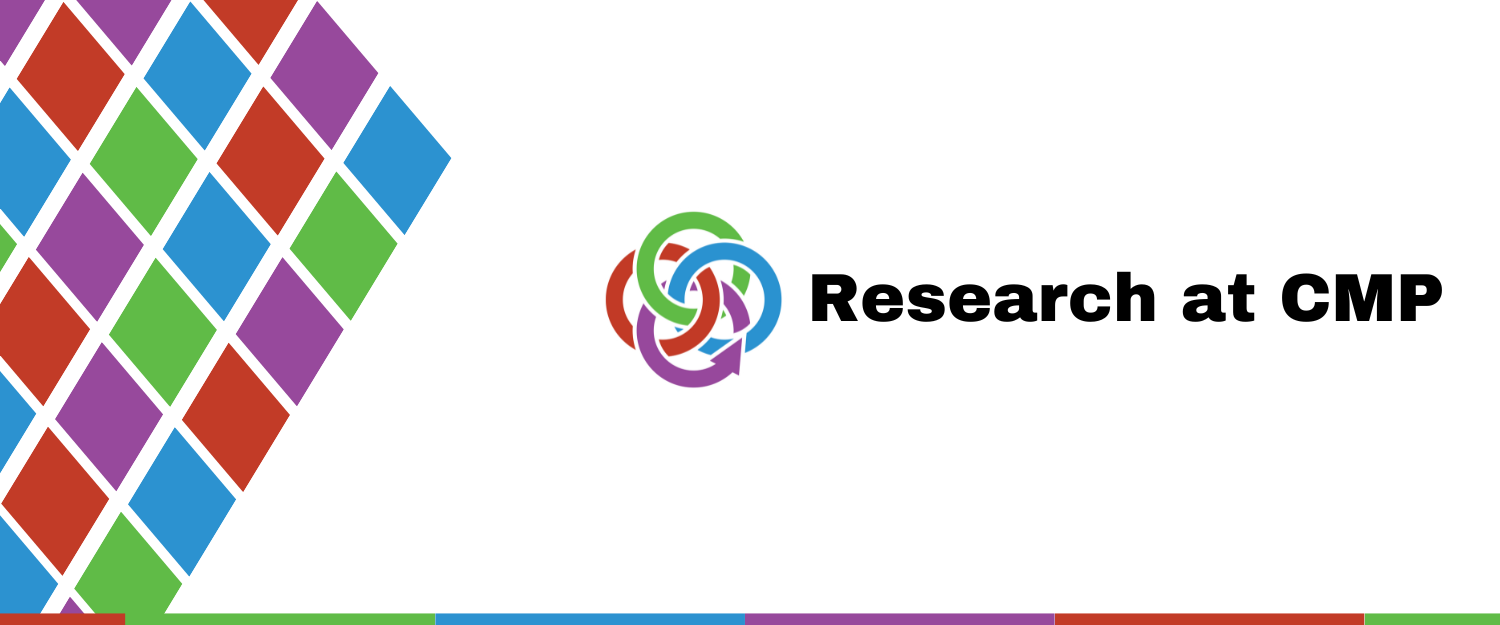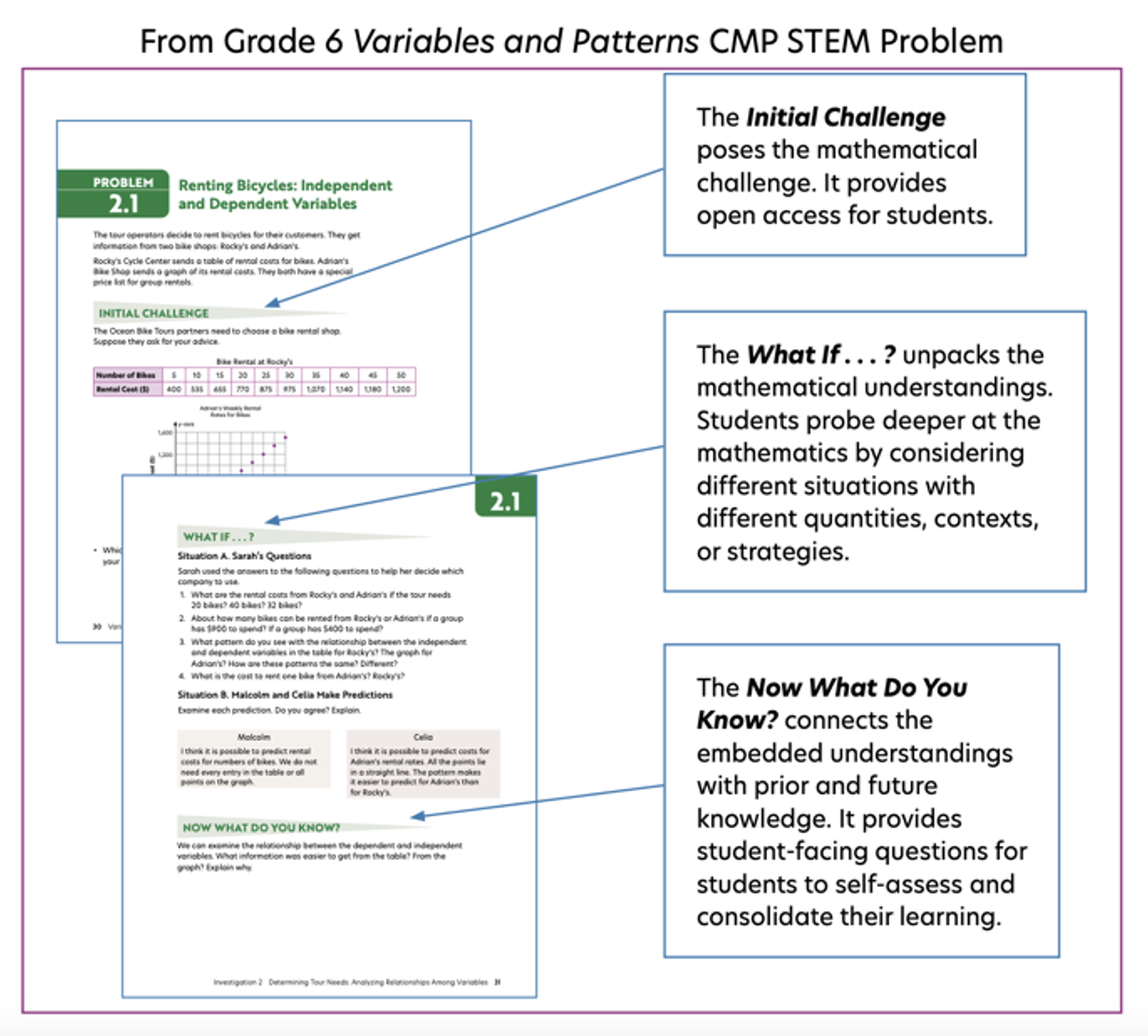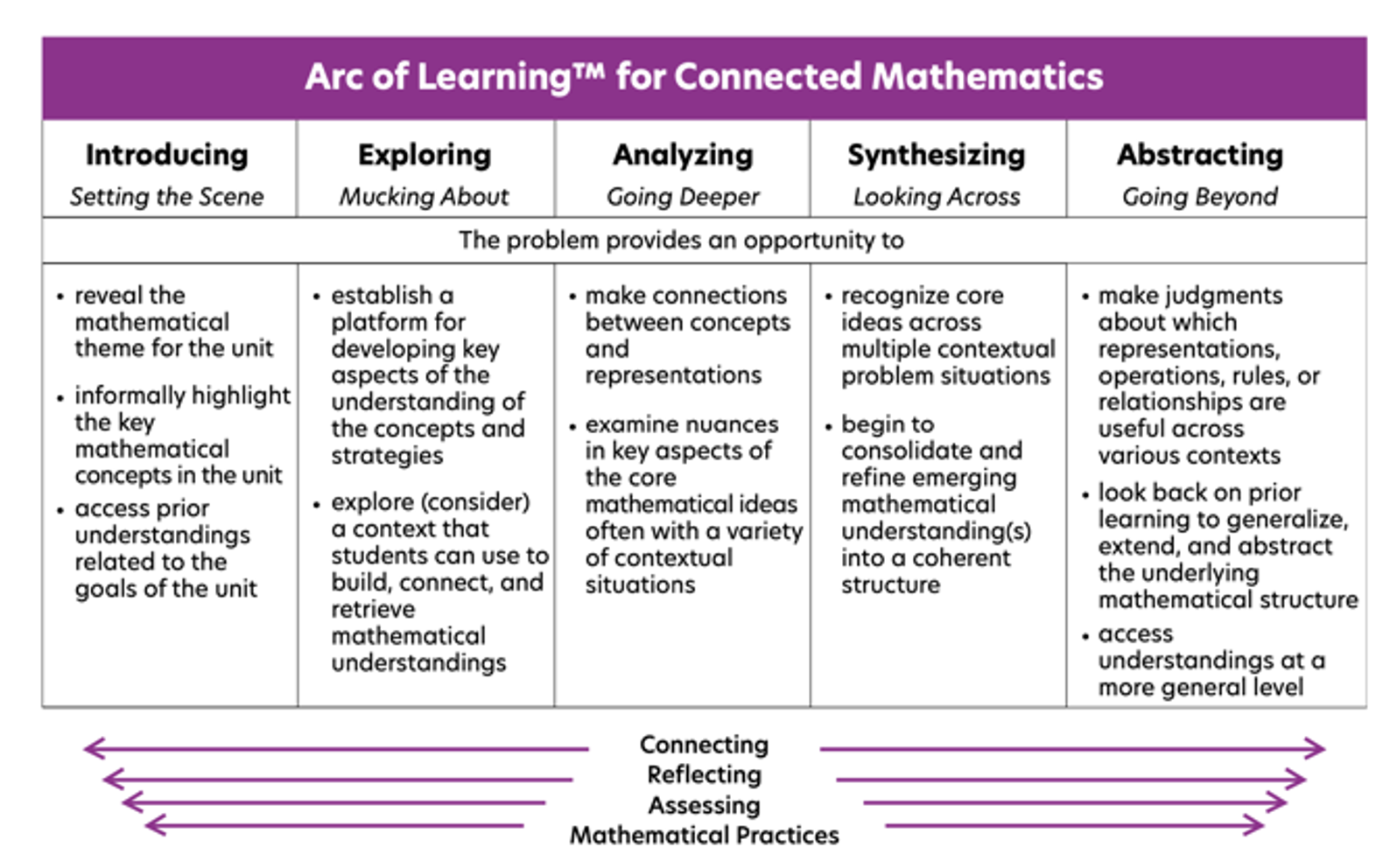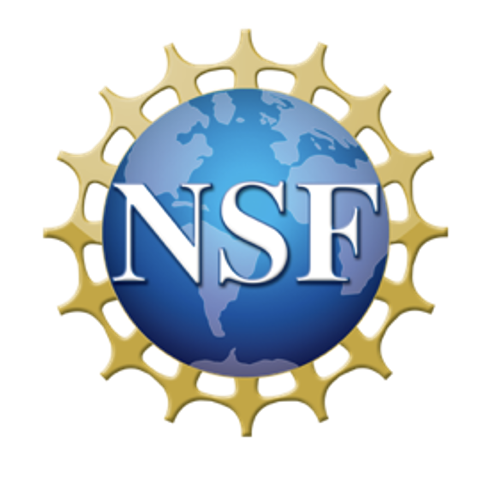Research at CMP

The development of CMP4 was built on the extensive knowledge gained from the development, research, and evaluation of CMP1, CMP2, and CMP3. Developing a curriculum with a complex set of interrelated goals takes time and input from many people. Our work at CMP was based on a set of deep commitments we had to creating a more powerful way to engage students in making sense of mathematics. Our advisory boards took an active role in reading and critiquing units in their various iterations. To enact our design principles, we found that four full years of field testing in schools for each development phase were essential.
The feedback from teachers and students across the world is the key element in the success of the CMP materials. The interactions between teacher and students with the materials become the most compelling parts of the teacher support. After the publication of a new edition, CMP continues to interact with students, teachers, administrator, teacher educators, and research across the United States and several international countries. These interactions also include several research projects to improve the teaching and learning of mathematics in CMP classrooms. The following research projects at Michigan State University have significantly informed the latest edition of CMP.
MSU/CMP Royalty Funded
The following design research projects were supported by royalties that Michigan State University received from the sales of CMP1, CMP2, and CMP3.
A unique feature of the CMP curriculum is that curriculum-generated student work is a context for student learning of mathematics. This project focuses on the role of student work found in curriculum materials and its potential for improving the teaching and learning of mathematics (Edson et al., 2017; Gilbertson et al., 2016; Gilbertson et al., 2016). In CMP4, the use of student work found in the Student Editions and teacher support help to (1) enhance student and teacher conceptual understanding and procedural fluency; (2) develop student agency, identity, authority, and ownership of mathematics; and (3) broaden student and teacher capacity to make sense of situations.
Over the years our knowledge of how and what students understand and the role of the
teacher in this process has grown exponentially, Over the years the problems have
taken on the burden of sharing this knowledge. For CMP4 we had the chance to deeply
reflect on what is the challenge being presented; what is the embedded mathematics
in the challenge; and how is this new knowledge connected to prior and future knowledge.
Thus the STEM problem format consists of three phases: Initial Challenge, What If . . . ? and Now

The Arc of LearningTM Framework is a resource for curriculum design and use that makes explicit the intentions of the curriculum designers about how students engage in the learning of mathematics over time (Edson et al., 2016, 2017a, 2017b, 2019; Edson et al., 2019; Edson et al., 2015).

In CMP4, the Arc of LearningTM framework informs
- how student thinking and learning is targeted and how that thinking and learning might unfold within and across mathematics sequences of problems;
- how teachers understand the development of long-term mathematical goals embedded in a coherent sequence of problems;
- the mathematical, pedagogical, and assessment decisions teachers make when planning or enacting lessons that respond to students’ mathematical conceptions;
- professional development to support problem-based learning; and the research and design on problem-based, contextualized curriculum.
As learners need different supports at different times in their learning, teachers attend to these diverse learning needs throughout classroom instruction. In CMP4, the Attending to Individual Learning Needs Framework provides teachers with ways to support diverse learning needs in rich mathematics problem-solving environments (Edson & Slanger-Grant, 2024, 2021; Edson et al., 2023). The differentiation framework highlights dimensions needed to enhance how students can access and engage with deep mathematical learning. The framework supports teachers in developing students as knowers and doers of mathematics by focusing on students’ strengths, backgrounds, and experiences. The five components of the framework include
- establishing a problem-solving environment that advances the mathematical understandings for each student;
- developing student agency, identity, and ownership of the mathematics;
- enhancing the portrayal of the mathematical ideas;
- bridging language to connect with students’ mathematical understandings; and
- allowing sufficient time to learn mathematical ideas through a sequenced set of tasks.
The teacher support materials give teachers guidance on using the Attending to Individual needs components.
Teachers assess student learning of mathematics throughout a CMP lesson. This project focuses on developing a set of resources to help mathematics teachers and instructional leaders make sense of formative assessment as an ongoing process in CMP classrooms. (Ray et al., 2017; Ray et al., 2016; Ray et al., 2016; Ray et al., 2015). This project was funded by CMP royalties from the MSU authors and administration to support research and development in mathematics education.
In this project, we report on field-testing and professional learning experiences of the fourth edition of the Connected Mathematics curriculum involving over 500 teachers from the United States and six countries. We ground our study in the theoretical and empirical curriculum design and enactment tensions that emerge in problem-based mathematics classrooms. We report on field-testing and professional learning experiences of the fourth edition of the curriculum involving over 500 teachers from the United States and six countries. This includes data analysis and feedback from four years of field-testing that reflect the interactions between teachers and students with the materials, including unit and problem feedback, teacher support, and assessment feedback to highlight changes made in curriculum design. Finally, we discuss implications for how the curriculum design and development process helps provide cohesive and effectively sequenced materials to support students and teachers in rich mathematical problem-solving experiences. (2025 paper in progress.)
This project is designing course materials for preservice teachers (PST) using some part of Connected Mathematics4. The materials provide four modules, each of which consists of four or five lessons. Each lesson contains two-part activities: (Part 1) PSTs experience student and teacher roles in solving mathematics problems embedded within real-world contexts), and (Part 2) PSTs reflect on teacher roles in such student-centered learning environments to connect with research-based teaching practices, theories, and pedagogy in mathematics education literature. The Part 1 activity utilizes one CMP curriculum unit (Moving Straight Ahead) that includes both the Student Edition and the Teacher Guide. Materials for each lesson include learning goals for PSTs, lesson outlines, suggested reading assignments, suggested discussion questions, additional readings/resources, and handouts. The modules aim to support PSTs in developing a deeper understanding of teaching and learning mathematics in a problem-based, inquiry-oriented classroom. Each of the four modules has both mathematical and pedagogical themes. (2024-in progress).

The royalties that MSU receives from the sales of its existing editions of CMP are used to fund research and development in mathematics and science education, including continual evaluation and revision of the CMP curriculum. These funds are also used to build capacity for mathematics educators and educational researchers. This includes several Lappan- Phillips Endowed Professorships and a Lappan-Phillips-Fitzgerald Endowed Mathematics Education Chair at Michigan State University. So far, over 70 graduate students have received assistantships, with many of them completing their dissertations in CMP classrooms; the funds have also supported science educators and postdoctoral researchers. These funds also provide professional development and leadership opportunities for teachers and district leaders. Out of the 20,000 participants at CMP events, more than 300 CMP ambassadors have served as workshop leaders, conference presenters, and mathematical coaches under the mentorship of the CMP author team.
Externally Funded Research
Recent Projects
In collaboration with the Concord Consortium, we are designing and testing a student and teacher digital collaborative platform for face-to-face instruction where each student has one-to-one access to laptops connected to the internet (Edson, 2024; Edson & Phillips, 2021, 2022; Edson et al., 2018, 2019; Edson et al., 2018; Going et al, 2018). The teacher typically has a computer in their classroom that is connected to a projection system, as well as a tablet that they can use to access the teacher digital dashboard and classroom workspace. The CMP STEM problem format emerged in part during this research project as the development team considered new ways to (re)design mathematics problems in a digital environment. This project is funded by several large research grants awarded by the National Science Foundation.
Overview of the Digital Collaborative Platform
Supporting rich student learning, discourse, and collaboration in technology-enhanced
classrooms can be a significant challenge as technology can act as an impediment to
conversation. This project supports the development of a collaborative digital learning
environment that embeds rich middle school mathematics tasks. The project aims to
understand how students' individual and collaborative engagement in learning mathematics
is enhanced by the digital platform, and how student engagement and learning is affected
over the course of a year-long seventh grade course. The project will develop the
initial digital collaborative platform using the Connected Mathematics Project materials,
a rich, problem-based middle grades mathematics curriculum. Using digital notebooks,
platform analytics, and other class artifacts, the team will develop a set of design
characteristics for digital platforms that support student collaboration in learning
mathematics.
This project will explore two key questions related to student learning and collaboration
in the technological platform: how does the platform enhance students' individual
and collaborative engagement, and how do student learning outcomes, engagement, and
attitudes develop over an academic year in which the platform is used repeatedly.
The project will use the platform to collect data related to student collaboration,
engagement, instructional practices, classroom artifacts, and written and spoken mathematical
reflections from students and teachers. The research outcomes will include guidelines
for a research-based approach to the use of learning analytics in technology-enhanced
mathematics education, an understanding of design features that support meaningful
STEM learning using digital notebooks, and the nature of the teacher-student boundaries
in using digital learning resources to support students' individual needs. The project
will focus on a deep examination of a key mathematical idea in the seventh-grade curriculum,
proportional reasoning, to understand how students' understandings are influenced
over time using the platform. Project activities will include development and testing
of the platform with students, pilot and field testing with teachers, and professional
learning opportunities for teachers to ensure thoughtful implementation of the platform
in practice.
The project will create a digital environment for middle school mathematics teachers
to promote collaboration. The digital environment for the teachers links to a student
collaborative environment and contains the same problem-based curriculum materials.
The environment helps teachers to collaborate and learn from one another. This occurs
when teachers plan, teach, and reflect on student learning. The online, digital platform
will help teachers work together more easily in networks that might be at different
schools. The resources online will include problem-based curriculum materials, classroom
artifacts from students, and resources created by teachers. The project will learn
about how teachers use resources, collaborate in the digital environment, and support
each other through the network. With more curriculum resources being created for online
teaching and learning, the project will help understand how mathematics teaching and
learning can be best supported.
The design-based research project in mathematics studies a digital, collaborative
environment for teachers that is combined with a student collaborative platform for
a middle school problem-solving curriculum. The goal is to design and develop the
digital collaborative platform so networks of teachers can create, use, and share
teaching resources for planning, enactment, and reflection on student thinking. The
project will include middle school teachers in the design process. The environment
for students enables student thinking to be visible to other students and the teacher.
This allows the teacher to archive and then examine student reasoning and thinking.
The new environment will allow that work to be shared with other teachers in a professional
learning community. The research question is: how do teachers in networks access,
generate, use, and share teaching resources (including classroom artifacts) as needed
to support mathematics teaching (planning, enactment, and reflection of student thinking)?
The project will use teacher interviews and artifacts from the collaborative environment
for mixed methods data collection and analysis. Teacher reflection resources will
be used to understand how they are thinking about students? mathematical work and
how they are using the platform resources.
The study will contribute knowledge about how to support students' learning and engagement
in mathematics using a digital curriculum platform. The goal of the project is to
study how the use of open-ended problems and "just-in-time" supports in a digital
platform can promote inquiry-based mathematics learning. Increasing numbers of schools
are using digital curriculum for mathematics. "Just-in-time" supports will give the
students options for seeking help as they are working on an open problem or give teachers
the opportunity to generate prompts for students working in small groups as needed.
The digital environment provides an opportunity for small groups of students to work
on challenging tasks and decide when they need help. The project is building on a
widely adopted middle school mathematics curriculum and tasks that are being used
in a range of settings. The project will examine middle school students' mathematics
learning and productive disciplinary engagement as well as teachers' role in the classroom
environment. This project is supported by NSF's EHR Core Research (ECR) program. The
ECR program emphasizes fundamental STEM education research that generates foundational
knowledge in the field.
The research will investigate three questions. (1) How can productive disciplinary
engagement be fostered in digital learning environments with open problems and "just-in-time"
supports? How can student learning of mathematics be enhanced? (2) What is the nature
of productive disciplinary engagement and student learning of mathematics at key development
points in a connected sequence of problems and lesson goals? (3) What information
do teachers draw upon when they use open problems and "just-in-time" supports? How
do teachers adapt the supports for specific problems? It is situated in a design-based
research framework for research relying on multiple qualitative and quantitative sources
of data. The project will go through three cycles of design: prototype testing with
students to investigate productive disciplinary engagement as a construct, classroom-based
pilot testing to understand the teacher's role, and broader field testing to extend
knowledge of how students' use open problems and "just-in-time" supports. The analysis
of students' data will document how they problematize mathematics situations, how
ideas are developed in a small group via students' positioning themselves in the conversation,
and how students use disciplinary norms and arguments for their ideas. Students' interactions
with the tool, particularly the "just-in-time" supports will be incorporated to understand
how ideas develop. Assessments will be used to document students' learning of the
mathematics. The teachers' role will be analyzed via classroom video, interviews,
and other artifacts of instruction.
The primary goal of this project is to help middle school students deepen and communicate
their understanding of mathematics. The project will develop and test a digital platform
for middle school mathematics classrooms. The digital platform will allow students
to collaboratively create representations of their mathematics thinking, incorporate
ideas from other students, and share their work with the class. The digital learning
environment makes use of a problem-centered mathematics curriculum that evolved from
extensive development, field-testing and evaluation, and is widely used in middle
schools. The research will also contribute to understanding about the design and innovative
use of digital resources and collaboration in classrooms as an increasing number of
schools are drawing on these kinds of tools. Projects in the DRK-12 program build
on fundamental research in STEM education and prior research and development efforts
that provide theoretical and empirical justification for proposed projects.
The project will support students to collaboratively construct, manipulate, and interpret
shared representations of mathematics using digital inscriptional resources. The research
activities will significantly enhance our understanding of student learning in mathematics
in three important ways. The project will report on how (1) evidence of student thinking
is made visible through the use of digital inscriptional resources, (2) student inscriptions
are documented, discussed, and manipulated in collaborative settings, and (3) students'
conceptual growth of big mathematical ideas grows over time. An iterative design research
process will incorporate four phases of development, testing and revision, and will
be conducted to study student use of the digital learning space and related inscriptional
resources. Data sources will include: classroom observations and artifacts, student
and teacher interviews and surveys, student assessment data, and analytics from the
digital platform. The process will include close collaboration with teachers to understand
the implementation and create revisions to the resources.
Past Projects
The Development and Implementation of CMP
In 1991 the Connected Mathematics Project (CMP) was funded by the National Science Foundation (NSF). It was designed as a national exemplar, bringing research-based practices to middle schools nationwide. Connected Mathematics1 was the first complete contextual problem-based mathematics middle school curriculum in the United States. Since then, more than 18 NSF funded projects have supported the CMP work.
Before CMP
CMP started with the NSF-funded Middle Grades Mathematics Project (MGMP) which produced 5 exemplary middle school mathematics unit. Each problem-based unit was designed to develop students’ understanding of an important mathematical idea. It also introduced the Launch-Explore-Summarize (LES) inquiry-based classroom. Several professional learning grants supported the implementation of the MGMP units.
- 1984-86:19NSF/SED-80-18025
- 1984: MGMP; NSF/DPE-83-17063
- 1986: MGMP; NSF/TEI-86-51686
- 1988-91: MGMP: NSF/TPE-88-50505
- 1986-89: The Teaching Algebra Project: NSF/TEI-85-51686
Connected Mathematics
After the release of the National Council of Teachers of Mathematics Curriculum and Evaluation Standards for School Mathematics (NCTM. 1989) the National Science Foundation funded Michigan State University to develop, field test, and disseminate Connected Mathematics1 (CMP1).
- 1991-96: NSF/ESI-93-55542 funded the development of Connected Mathematics1
- 1993-96: NSF funded a Research Supplement to the Connected Mathematics Project
- 1995-98. NSF/ESI-93-55542 Connecting Teaching, Learning, and Assessment funded dissemination information and professional learning for CMP1 for districts across the United States.
In 2000 NSF funded a revision of Connected Mathematics2. CMP2 was designed, field-tested and evaluated in 49 school sites in 12 states and the District of Columbia for five years.
- 2000-06: NSF/ESI-9986372
CMP with NSF funding partnered with the ShowME Center at the University of Missouri to disseminate information on the five NSF-funded middle mathematics curriculum.
1997–02: NSF/ESI-97-14999
2002-06: NSF/CG004954-3
CMP partnered with the University of Missouri, University of Chicago, and Western Michigan University to student mathematics curricula.
2004-14: NSF/ESI-0333879
CMP3 was funded by Michigan State Universities royalties from CMP1 and CMP2.
The development of CMP3 was built on the knowledge we had gained over the past 20 years of working with teachers and students who used CMP1 and CMP2. In addition, for 17 years we solicited information from the field through our website and CMP mailing list and through our annual CMP week-long workshops and two-day conferences. The experiences with development processes for CMP1 and CMP2 and the ongoing gathering of information from teachers resulted in a smaller but more focused development process for CMP3.
CMP4 was funded through Michigan State University’s royalties from CMP1, CMP2, and CMP3. CMP4 went through 5 years of design, field-testing, and evaluation with 500 teaches in 26 states and 6 foreign countries. CMP4 like its predecessors continues to move mathematics education forward with its new CMP STEM Problem format, Arc of Learning Framework, Attending to Individual Needs Framework and enhanced engagement activities.
ACKNOWLEDGEMENTS
 |
These projects were supported by the National Science Foundation grants DRL-1660926, DRL-1620934, DRL-1660926, DRL-2007842, and DRL-2200763. Any opinions, findings, and conclusions or recommendations expressed in the material are those of the authors and do not necessarily reflect the views of the National Science Foundation. |